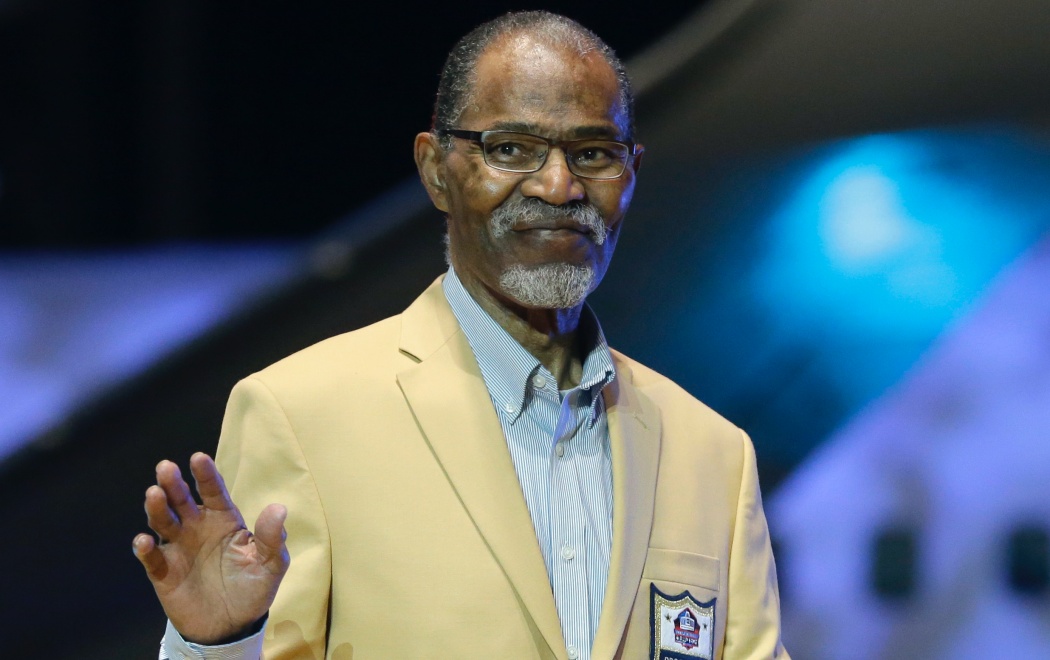Gold Jacket Spotlight: Jack-Of-All-Trades, Jimmy Johnson

In 1965, new 49ers head coach Jack Christiansen asked Jimmy Johnson, then a four-year veteran, a straight-forward question: “Do you want to play offense, or do you want to play defense?”
So blessed was Jimmy with athletic skills, either answer would have made San Francisco a better team.
Jimmy chose defense, and the ensuing 12 years demonstrated it was the right decision, culminating in his election to the Pro Football Hall of Fame in a career revisited this week in the Gold Jacket Spotlight.
“My career with the San Francisco 49ers progressed kind of like a jack-of-all-trades for about four years,” Jimmy recalled in his 1994 Enshrinement speech. “I played offense one year, then the next year I would play defense. The next year I would go back to offense, the next I would go back to defense.”
The 49ers originally envisioned Jimmy contributing on offense. They selected him with the sixth overall pick of the 1961 NFL Draft after his productive college career as a wingback and defensive back at UCLA. He dislocated his left wrist practicing for the annual College All-Star Game, however, and remained in a cast at the beginning of his rookie camp.
Unable to catch a football as a receiver, Jimmy moved to safety. By the time his rookie season ended, he had intercepted five passes – second most on the team – and gained distinction as a sure tackler.
In 1962, the 49ers reverted to Plan A and Jimmy was back on offense. He caught 34 passes for 627 yards – both second highest for the 49ers, with a team-leading 18.4 per-catch average. In a game against Detroit, he totaled 11 receptions for 181 yards. In a victory over the Bears earlier in the season, he sealed a 34-27 win with a team-record 80-yard TD reception.
Jimmy began the 1963 season at wide receiver, but a thin secondary forced the 49ers to move him back to safety in Week 4. In 1964, he shifted to left cornerback to fill another team need and held down that position the remainder of his career, although Christiansen left the door open for a move back to receiver in 1965.
“If he had asked me that four years earlier, I would have surely chosen the high-profile offense position,” Jimmy said, “but those first four years had given me an insight on what defense was all about, and the pure fact that I knew that I could have a longer career as a defensive player than an offensive player.
“So, I checked in at the left corner and spent the rest of my career toiling to be the best I could be.”
Jimmy widely was regarded as one of the best man-to-man corners in the history of pro football. He finished his 16-year NFL career with 213 games played, a team record until Jerry Rice surpassed it a quarter-century later. His 47 interceptions stood as the team record until Hall of Famer Ronnie Lott (51) eventually pushed it to No. 2. Jimmy returned the interceptions for 615 yards with two pick-sixes.
“Jim is one of the best corners in pro football,” Hall of Fame receiver Fred Biletnikoff of the Oakland Raiders once said in praise. “I just hope he makes a mistake of some sort so I can get an advantage.”
It was Jimmy who typically held the advantage, however. He was a four-time first-team All-Pro, five-time Pro Bowl selection and a member of the NFL’s All-Decade Team of the 1970s.
In 1977, the 49ers retired his No. 37 jersey during “Jimmy Johnson Day at Candlestick Park.” Now it’s “Jimmy Johnson Week” in the Gold Jacket Spotlight.
Woodsons Defined Taking It To The House
This is a story about two completely different NFL players whose football careers aren’t so different after all.
Black College Football Hall of Fame Classic Returns to PFHOF Campus
Tickets now available for Labor Day Weekend events.